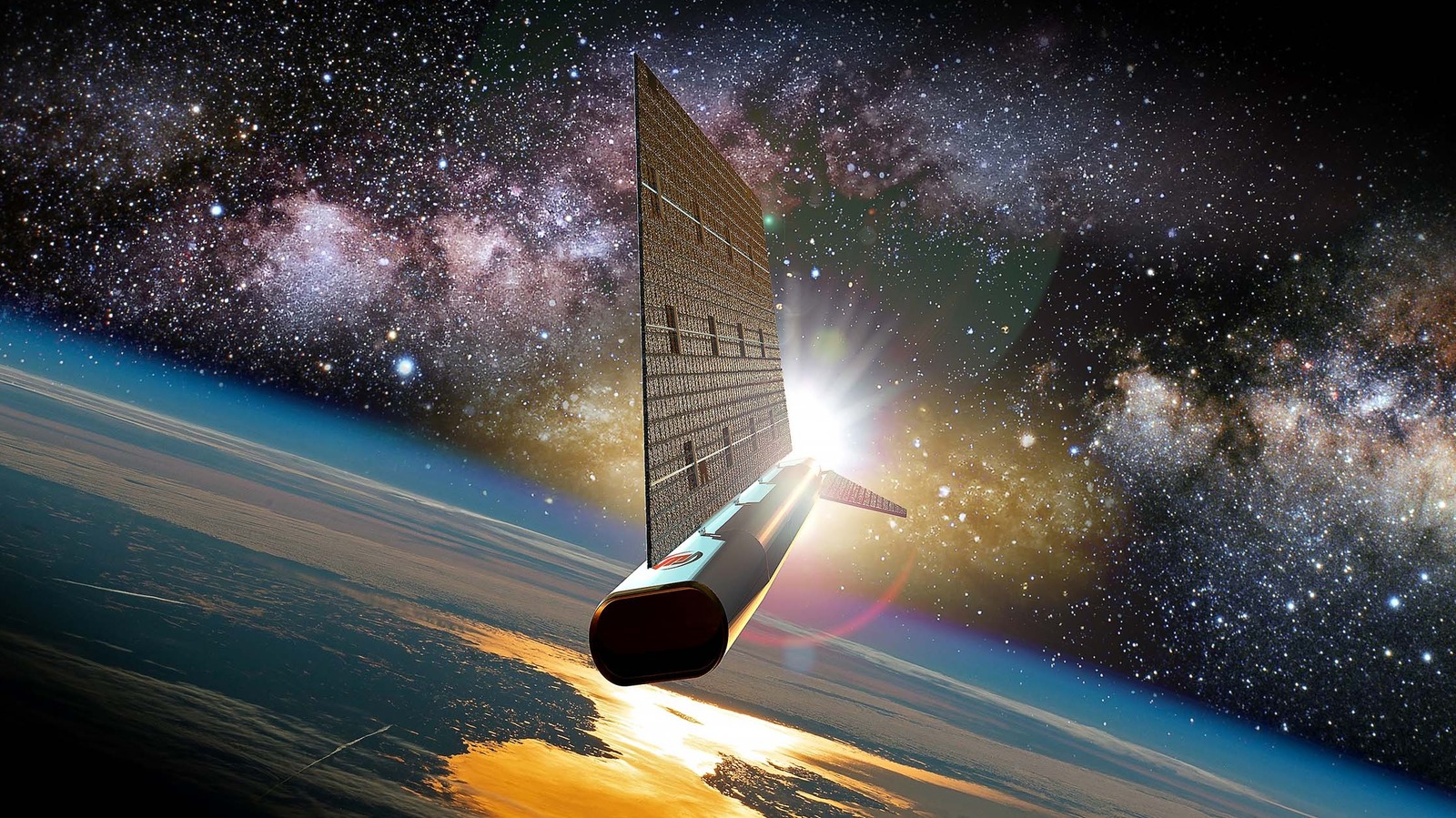Politics
Space Force Eyes Very Low-Earth Orbit to Counter China’s Advances

The U.S. Space Force is shifting its focus to very low-Earth orbit (VLEO) as a strategy to counter China’s expanding space capabilities. This area, situated between 55 to 280 miles above the Earth’s surface, presents unique challenges and opportunities that the U.S. has not previously explored. As China advances toward a renewed lunar mission, the Space Force recognizes the need to address potential threats posed by Chinese operations in this lower orbital environment.
VLEO represents a new frontier for military and technological applications. The atmosphere at this altitude is thin enough to prevent conventional airplanes from flying, yet dense enough to create drag on satellites. This phenomenon, long regarded as a disadvantage, may actually provide a tactical edge. According to Dr. Gillian Bussey, Chief Deputy Science Officer of the Space Force, the U.S. and China approach the air-space continuum differently. While the U.S. maintains a clear distinction between air and space, China is developing technologies that seamlessly bridge the two domains.
Strategic Implications of VLEO
The U.S. aims to leverage the unique characteristics of VLEO for enhanced military capabilities. The presence of drag in this orbit can be manipulated for both maneuvering and propulsion, potentially allowing spacecraft to operate with greater agility than traditional satellites. This approach is particularly relevant as the Space Force and the Defense Advanced Research Projects Agency (DARPA) are currently funding projects with companies like Rocket Lab and Redwire to explore the use of ambient air as a propellant. If successful, these innovations could reduce the reliance on onboard fuel, thereby decreasing costs associated with satellite launches.
Additionally, operating in VLEO could improve signal strength and imaging capabilities, both critical for military operations. The lower altitude allows for more detailed photography and greater redundancy, offering a potential fallback in case of satellite disruptions. Furthermore, VLEO could mitigate risks associated with the Kessler Effect, where collisions in space create cascading debris that threatens other satellites. In VLEO, the drag would pull any non-propelled debris back to Earth more quickly, reducing the threat of such an event.
Emerging Technologies and Future Considerations
China’s recent advances, including the development of hybrid vehicles like the wing-in-ground effect plane, signal a potential shift in how nations may utilize the space environment. The U.S. military’s current arsenal lacks specific defenses against such innovations, prompting a sense of urgency within the Space Force to adapt. As Dr. Bussey notes, “It’s not really entirely clear exactly how we would use VLEO, or exactly what the threat is expected to be there.” This uncertainty highlights the necessity for continued exploration and research in this new domain.
As the U.S. and China continue to navigate their respective ambitions in space, the implications of VLEO could redefine military strategies and technologies. The Space Force’s willingness to explore this uncharted territory suggests a proactive approach to maintaining its competitive edge. As nations re-evaluate their understanding of “air” and “space,” the future of military operations may increasingly blur the lines that have historically separated these domains.
-

 Lifestyle3 months ago
Lifestyle3 months agoLibraries Challenge Rising E-Book Costs Amid Growing Demand
-

 Sports3 months ago
Sports3 months agoTyreek Hill Responds to Tua Tagovailoa’s Comments on Team Dynamics
-

 Sports3 months ago
Sports3 months agoLiverpool Secures Agreement to Sign Young Striker Will Wright
-

 Lifestyle3 months ago
Lifestyle3 months agoSave Your Split Tomatoes: Expert Tips for Gardeners
-

 Lifestyle3 months ago
Lifestyle3 months agoPrincess Beatrice’s Daughter Athena Joins Siblings at London Parade
-

 World3 months ago
World3 months agoWinter Storms Lash New South Wales with Snow, Flood Risks
-

 Science3 months ago
Science3 months agoTrump Administration Moves to Repeal Key Climate Regulation
-

 Science2 months ago
Science2 months agoSan Francisco Hosts Unique Contest to Identify “Performative Males”
-

 Business3 months ago
Business3 months agoSoFi Technologies Shares Slip 2% Following Insider Stock Sale
-

 Science3 months ago
Science3 months agoNew Tool Reveals Link Between Horse Coat Condition and Parasites
-

 Sports3 months ago
Sports3 months agoElon Musk Sculpture Travels From Utah to Yosemite National Park
-

 Science3 months ago
Science3 months agoNew Study Confirms Humans Transported Stonehenge Bluestones









